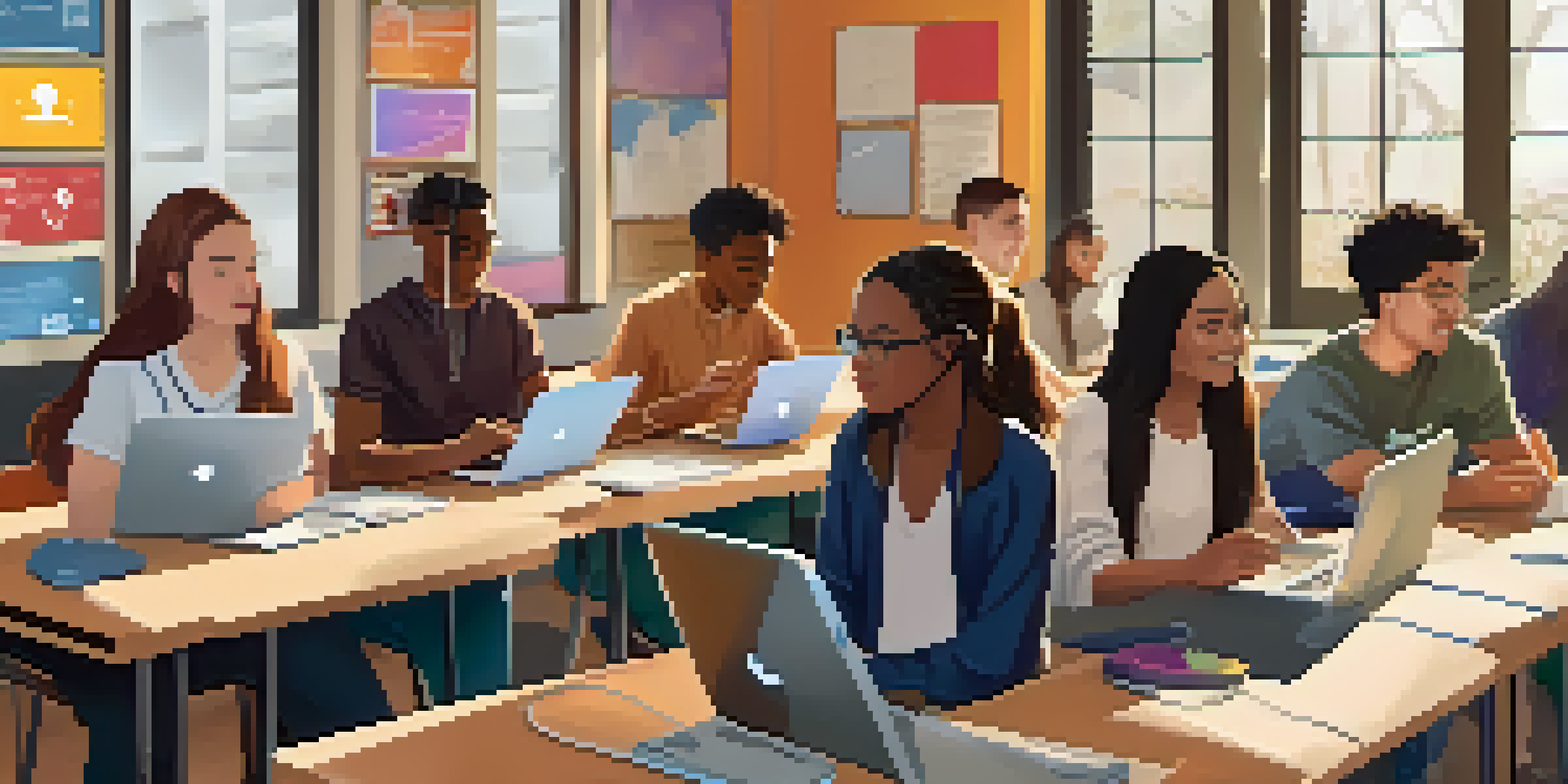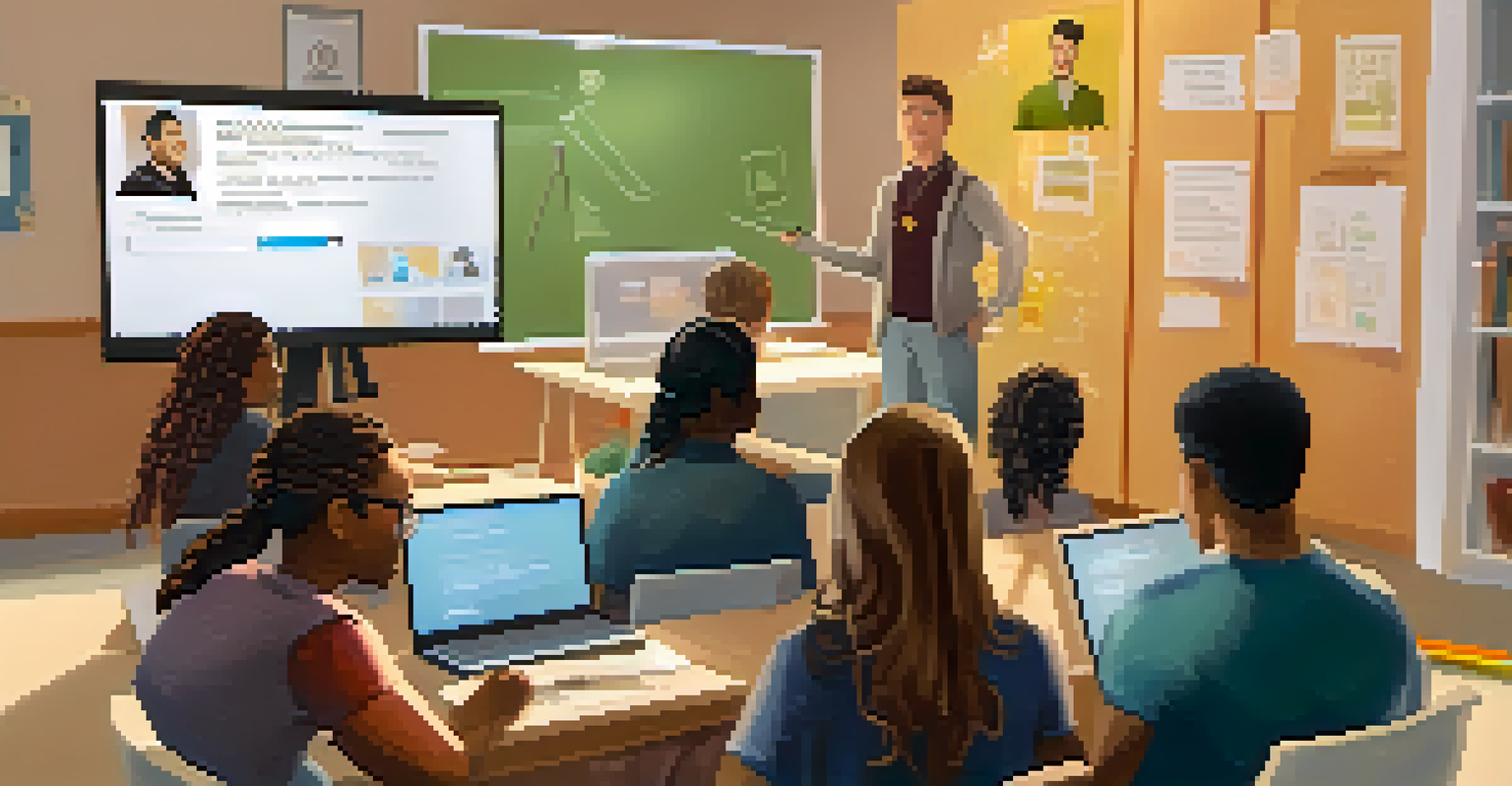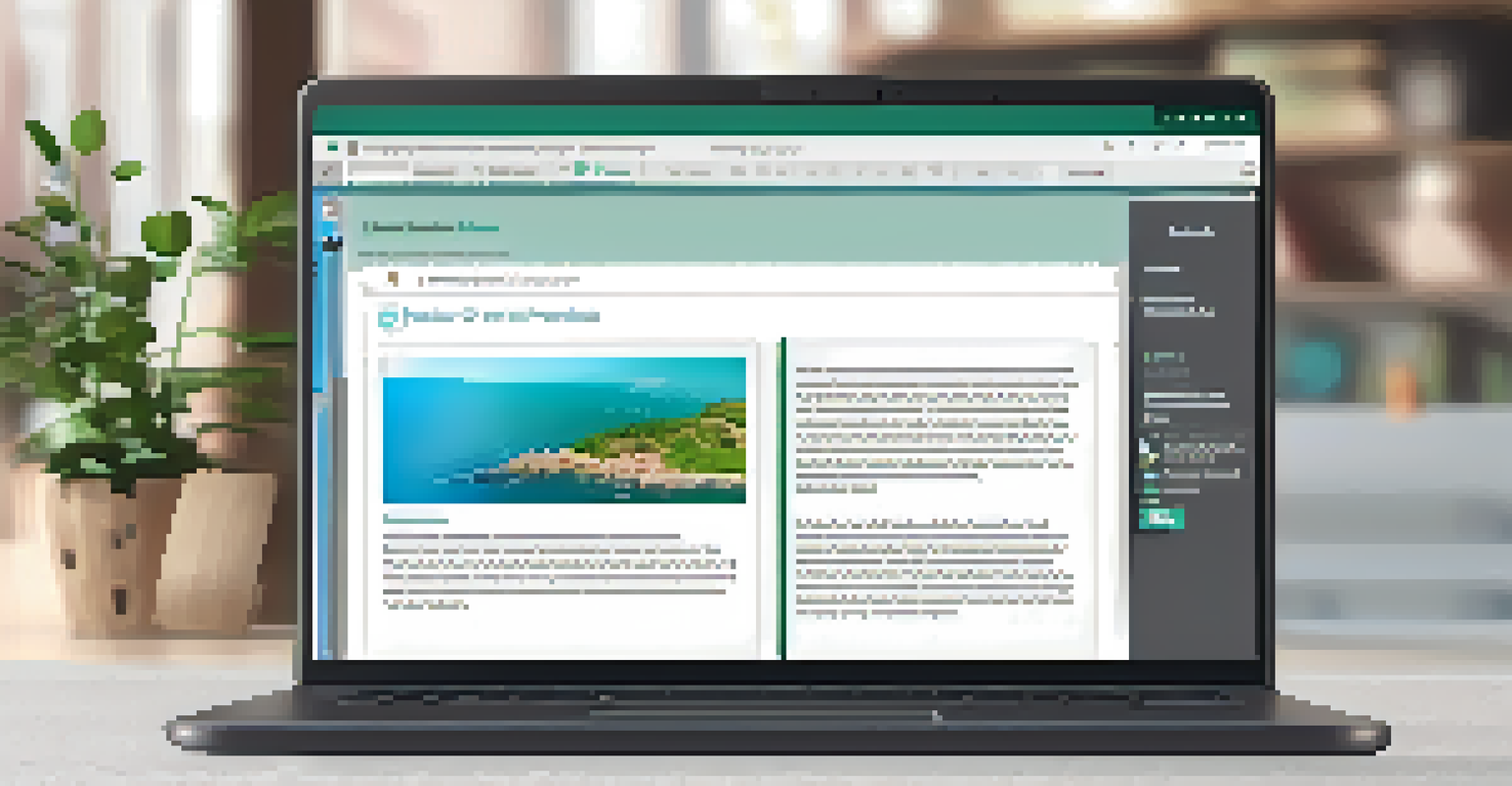E-Learning Accessibility: Breaking Down Barriers in Education

Understanding E-Learning Accessibility and Its Importance
E-learning accessibility refers to the practice of designing online courses and resources that can be used by all learners, regardless of their abilities. This means ensuring that students with disabilities, such as visual or hearing impairments, can access the same quality of education as their peers. By prioritizing accessibility, educational institutions can create a more inclusive environment that fosters diversity and equality.
Accessibility is not a feature, it’s a social trend.
The importance of e-learning accessibility cannot be overstated. With the rise of online education, it is crucial to ensure that every student has the tools and resources necessary to succeed. When we make learning accessible, we not only comply with legal standards but also promote a culture of understanding and respect for individual differences.
Moreover, accessible e-learning benefits everyone, not just those with disabilities. For instance, captions can help non-native speakers better understand the content, while clear navigation aids all learners in finding information quickly. In this way, accessibility enhances the learning experience for all students.
Common Barriers to E-Learning Accessibility
Despite the progress made in e-learning, several barriers still prevent full accessibility. One of the most significant issues is the lack of awareness about accessibility standards among educators and content creators. Many online courses are designed without considering the diverse needs of all learners, which can lead to confusing layouts or inaccessible content.

Another common barrier is the technology itself. Not all students have access to the necessary devices or reliable internet connections to participate in online learning. This digital divide can disproportionately affect students from low-income backgrounds, making it even more challenging for them to engage with e-learning platforms.
E-Learning Must Be Inclusive
Accessibility in e-learning ensures that all students, including those with disabilities, have equal opportunities to succeed.
Lastly, the absence of proper training for educators on how to create accessible materials can hinder progress. If teachers are not equipped with the knowledge and skills to design inclusive courses, they may unintentionally exclude students who require additional support.
Key Principles of Accessible E-Learning Design
To create an accessible e-learning environment, educators should follow key principles that promote inclusivity. One essential principle is to provide multiple means of representation. This means presenting information in various formats—such as text, audio, and video—to cater to different learning styles and abilities.
The only way to ensure that everyone has access to education is to make it accessible from the start.
Another principle is ensuring that all digital content is navigable using a keyboard. This is particularly important for students with mobility impairments who may struggle to use a mouse. By designing courses that can be fully navigated with a keyboard, we can enhance accessibility for these learners.
Finally, it's crucial to incorporate feedback from users with disabilities during the design process. By involving the very individuals who will benefit from accessible e-learning, creators can identify potential pitfalls and make informed adjustments to their materials.
Assistive Technologies Supporting E-Learning Accessibility
Assistive technologies play a vital role in enhancing e-learning accessibility. Tools like screen readers allow visually impaired students to access text-based content by converting it into speech. This technology can bridge the gap between students and digital resources, ensuring that everyone has equal opportunities to learn.
Another important assistive technology is speech recognition software, which enables students with writing difficulties to dictate their thoughts instead of typing. This can significantly reduce barriers for those who struggle with traditional methods of communication and allow them to express their ideas more freely.
Barriers to Accessibility Persist
Common barriers such as lack of awareness, technology access issues, and insufficient educator training hinder full e-learning accessibility.
Additionally, captioning and transcription services are essential for students with hearing impairments. By providing accurate captions for videos and transcriptions for audio content, educators can ensure that all learners can engage with the material fully.
Implementing Best Practices for E-Learning Accessibility
Implementing best practices for e-learning accessibility involves a commitment to continuous improvement. One best practice is to regularly audit online courses for compliance with accessibility standards, such as the Web Content Accessibility Guidelines (WCAG). This proactive approach can help identify potential issues and ensure that materials remain inclusive.
Another key practice is to offer training sessions for educators on how to create accessible content. By equipping teachers with the necessary skills and knowledge, institutions can foster a culture of accessibility that benefits all learners. This can include workshops, webinars, or even online courses focused on best practices.
Finally, encouraging open communication between students and educators about accessibility needs is crucial. By creating an environment where students feel comfortable discussing their challenges, educators can make informed adjustments and provide the necessary support.
The Role of Policies in Promoting Accessibility
Policies play a significant role in promoting e-learning accessibility across educational institutions. By establishing clear guidelines and standards for accessibility, schools and universities can create a framework that fosters inclusivity. These policies should outline specific expectations for course design, technology use, and support services.
Additionally, policies can mandate regular training and professional development for educators on accessibility best practices. This ensures that teaching staff are equipped with the knowledge and skills needed to create inclusive environments for all students. By making accessibility a priority at the institutional level, schools can demonstrate their commitment to diversity and equality.
Policies Drive Accessibility Growth
Establishing clear policies and guidelines at educational institutions is crucial for promoting e-learning accessibility and inclusivity.
Moreover, policies can also address the need for accessible technology. By investing in tools and resources that support accessibility, institutions can ensure that all students have the necessary equipment to participate in e-learning. This commitment to providing equal opportunities can lead to a more equitable educational landscape.
Future Trends in E-Learning Accessibility
As technology continues to evolve, so too will the landscape of e-learning accessibility. One trend we can expect to see is the increased use of artificial intelligence (AI) to enhance accessibility features. For instance, AI-driven tools can provide real-time captioning and translation services, making content more accessible for diverse learners.
Another trend is the growing emphasis on universal design for learning (UDL), which focuses on creating flexible learning environments that accommodate individual learning differences. By adopting UDL principles, educators can design courses that are inherently accessible, reducing the need for retrofitting.

Finally, collaboration between tech companies and educational institutions will likely increase. By working together, these entities can develop innovative solutions that address accessibility challenges, ensuring that e-learning remains inclusive and equitable for all students.